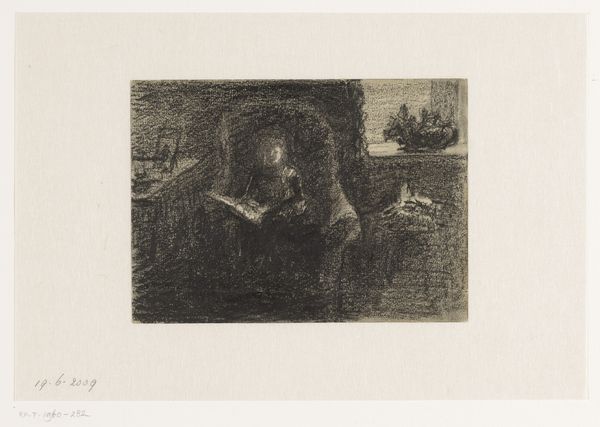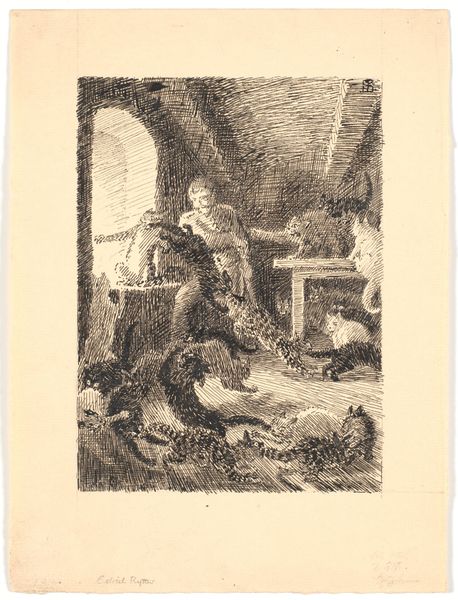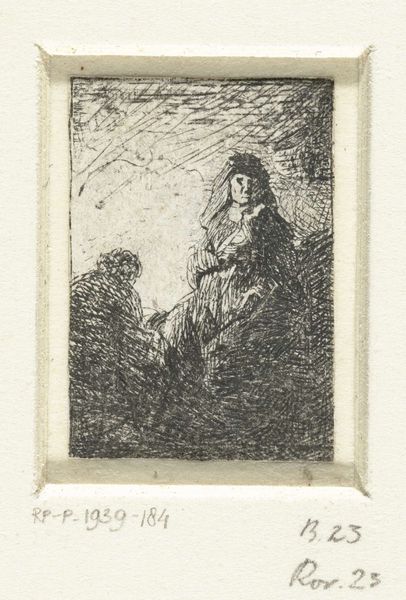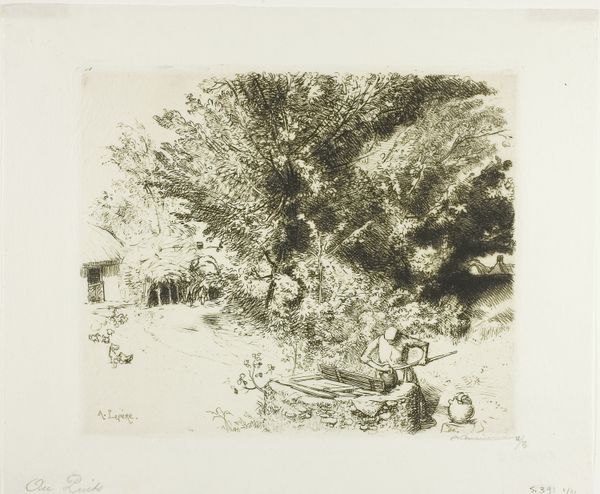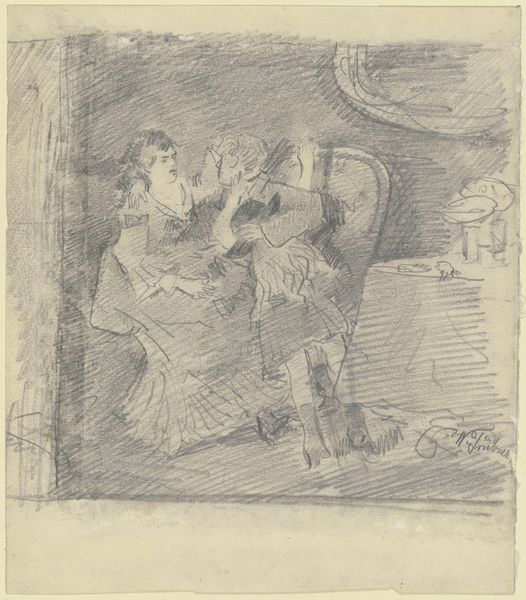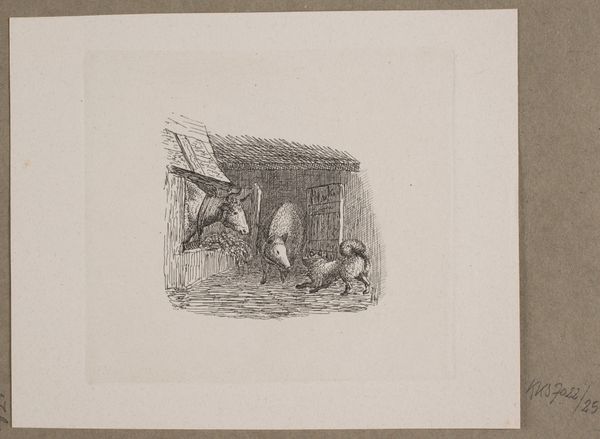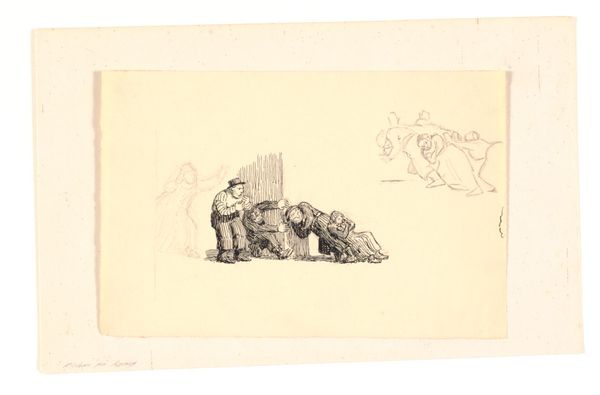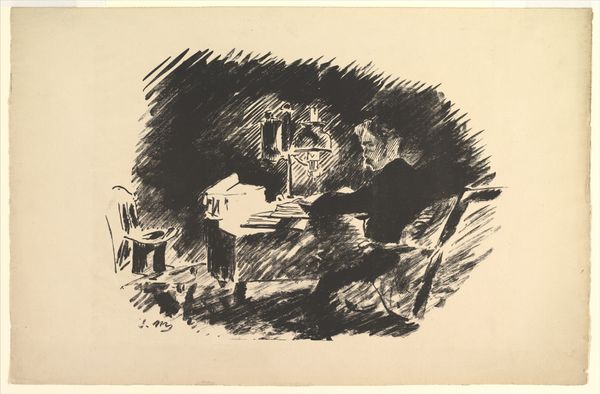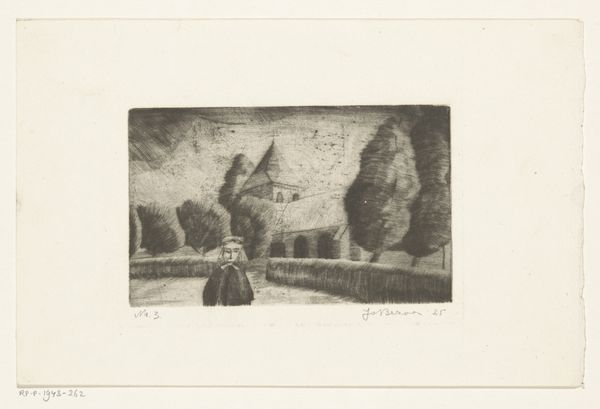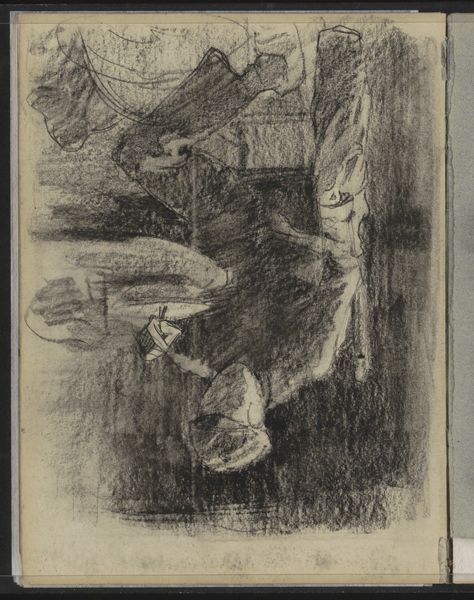
drawing, ink, pen
#
drawing
#
ink drawing
#
pen drawing
#
pen sketch
#
landscape
#
figuration
#
personal sketchbook
#
ink
#
ink drawing experimentation
#
pen-ink sketch
#
thin linework
#
pen work
#
sketchbook drawing
#
pen
#
sketchbook art
Dimensions: 164 mm (height) x 190 mm (width) (bladmaal)
Editor: This is Niels Skovgaard's "Illustration til Den fundne skat," created in 1928, using pen and ink. The scratchy texture and high contrast create an anxious mood, appropriate to a story about buried treasure. What is most striking about this drawing to you? Curator: The apparent roughness actually belies the control Skovgaard has over his materials. This isn't just a sketch; it's a very deliberate use of ink and paper to illustrate a story about value. Consider the sheer labor involved in creating that texture, all those tiny lines! What does that suggest to you about the value Skovgaard, or perhaps his patron, placed on illustration? Editor: It seems like they valued it a great deal! Given the labor, was illustration considered 'high art' at the time, or more of a commodity? Curator: That's the critical question, isn't it? The traditional art historical narrative elevates painting and sculpture, distancing them from 'mere' craft. But Skovgaard's drawing forces us to confront that hierarchy. We have to consider how the means of production—pen, ink, paper, the artist's time and skill—contribute to the final 'product' and its value within a specific social context. Think about who was consuming these illustrations, and what purpose they served. Editor: So, looking at this artwork through a materialist lens really opens up questions about how we define "art" and who decides its value. I will remember that! Curator: Exactly! It forces us to analyze the conditions under which art is made and consumed. Ultimately, understanding that informs our reading of the image.
Comments
No comments
Be the first to comment and join the conversation on the ultimate creative platform.
